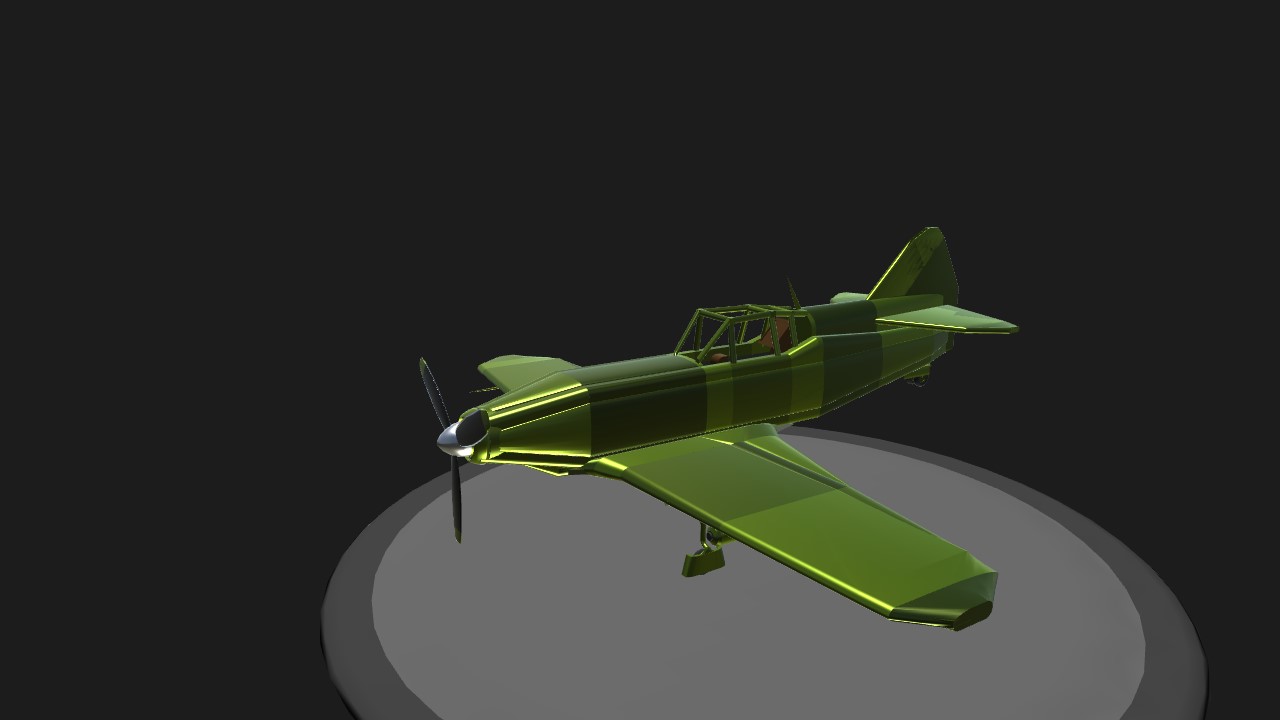This is one of the most capable Soviet fighters in World War 2
Controls are as usual
VTOL for Landing Flaps
Act 1 to drop 250lbs bombs
—————————————————–———————–—————
The La-5's heritage began even before the outbreak of war, with the LaGG-1, a promising yet underpowered aircraft. The LaGG-3 was a modification of that design that attempted to correct this by both lightening the airframe and fitting a more powerful engine. Nevertheless, this was not enough, and the lack of power remained a significant problem.
In early 1942, two of the LaGG-1 and -3's designers, Semyon Lavochkin and Vladimir Gorbunov, attempted to correct this deficiency by experimentally fitting a LaGG-3 with the more powerful Shvetsov ASh-82 radial engine. Since the LaGG-3 was powered by an inline engine, they accomplished this by grafting on the nose section of a Sukhoi Su-2 (which used this engine). By now, the shortcomings of the LaGG-3 had caused Lavochkin to fall out of Joseph Stalin's favour, and factories previously assigned to LaGG-3 construction had been turned over to building the rival Yakovlev Yak-1 and Yak-7. The design work, which required that the LaGG-3 be adapted to its new engine and still maintain the aircraft's balance, was undertaken by Lavochkin in a small hut beside an airfield over the winter of 1941–1942, all completely unofficially.
When the prototype took flight in March, the result was surprisingly pleasing – the fighter finally had a powerplant that allowed it to perform as well in the air as it had been supposed to on paper. After flying, the LaG-5 (the change in name reflecting that one of the original LaGG designers was no longer with the programme), Air Force test pilots declared it superior to the Yak-7, and intensive flight tests began in April.
By July, Stalin ordered maximum-rate production of the aircraft and the conversion of any incomplete LaGG-3 airframes to the new configuration, now simply known as the La-5. The prototype was put in mass production almost immediately in factories located in Moscow and in the Yaroslav region. Design changes for main production La-5 models included fixed slats to improve all-round performance. While still inferior to the best German fighters at higher altitudes, the La-5 proved to be every bit their match closer to the ground. With most of the air combat over the Eastern Front taking place at altitudes of under 5,000 m (16,404 ft), the La-5 was very much in its element.
Further refinement of the aircraft involved cutting down the rear fuselage to give the pilot better visibility, making this version the La-5F. Later, a fuel-injected engine, a different engine air intake and further lightening of the aircraft led to the designation La-5FN that would become the definitive version of the aircraft. A full circle turn took 18–19 seconds. Altogether, 9,920 La-5s of all variants were built, including a number of dedicated trainer versions, designated La-5UTI. Very late La-5FN production models had two 20mm Berezin B-20 cannon installed in the cowling in place of the heavier two 20mm ShVAK (both were capable of a salvo weight of 3.4 kg/s). Further improvements of the aircraft would lead to the Lavochkin La-7.
A number of La-5s continued in the service of Eastern Bloc nations after the end of the war, including Czechoslovakia.
Source: Wikipedia
• Mind the turning speed, and if you want to do a flip, you have to be at 300mph or above, or it will stall
Specifications
General Characteristics
- Created On iOS
- Wingspan 48.4ft (14.7m)
- Length 42.9ft (13.1m)
- Height 17.0ft (5.2m)
- Empty Weight 15,333lbs (6,955kg)
- Loaded Weight 19,100lbs (8,663kg)
Performance
- Horse Power/Weight Ratio 0.104
- Wing Loading 34.1lbs/ft2 (166.7kg/m2)
- Wing Area 559.4ft2 (52.0m2)
- Drag Points 9306
Parts
- Number of Parts 204
- Control Surfaces 9
- Performance Cost 733







LA-5 has a radial engine. LAGG-3 has an inline engine. @Supermini555
To me, it looks similar to a LA-5@Destroyer5713
U made a LAGG-3, not an LA-5. @Supermini555
Thanks @Djbanana
Thanks @rottyarmee
Thanks @kukimuki1234
Thanks @CL4TRP
Thanks @AliBee
Thanks @Lasjes
Thanks @UnknownNate and @CarlosDanger13
Thanks @OldColonel
Thanks @ACMECo1940
Np!
Thanks @SteadfastContracting
Thanks @LouisEP
Thanks @Megatholis
Very awesome design man!
@Supermini555 no problem!
Thanks @MrSilverWolf
Thanks @ccooper @General360